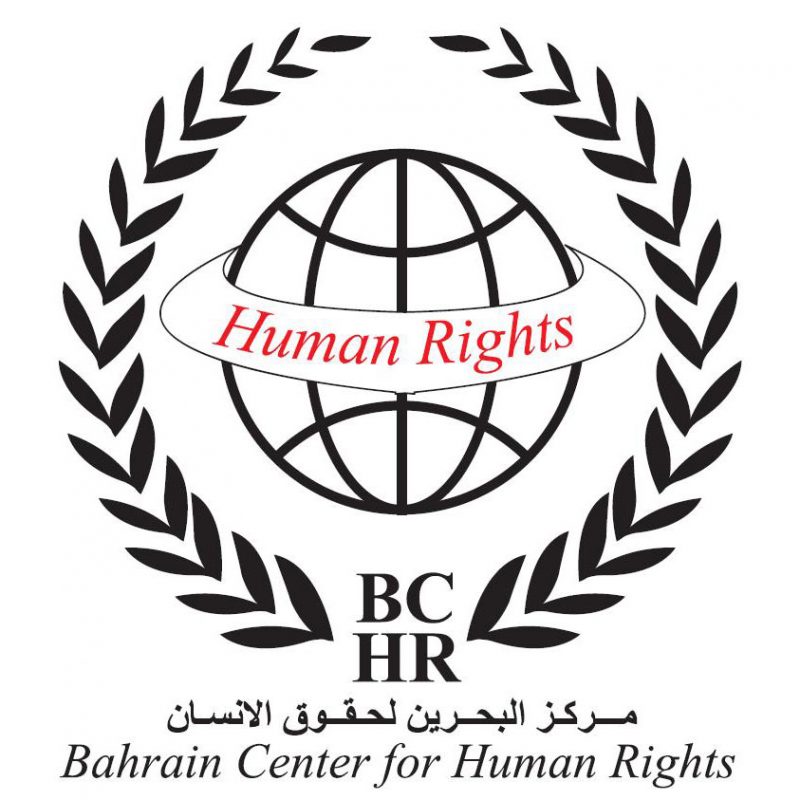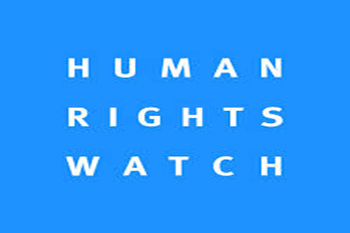(Beirut) – Bahraini authorities should order an independent investigation into allegations that security forces used excessive force to quell unrest in Jaw Prison on March 10, 2015, and mistreated prisoners in the aftermath, Human Rights Watch said today. Security force members or other officials found to have used unlawful or disproportionate force should be held to account, Human Rights Watch said.
Human Rights Watch spoke separately in mid-April by phone to three recently released Jaw Prison inmates who said they saw security forces fire teargas into prison buildings and systematically beat inmates as they cleared cells when quelling the unrest on March 10. The three alleged that following the unrest, security officials subjected prisoners, including some held on political grounds, to physical and psychological abuse and did not allow them medical treatment for their injuries, including head and leg wounds.
“The more we learn about Bahrain’s response to the Jaw Prison unrest, the more troubling the picture becomes,” said Joe Stork, deputy Middle East and North Africa director. “The authorities need to allow independent medical access to the prison at once and ensure their access to building 10, where the most serious abuses are alleged to have taken place.”
The March 10 unrest began following an altercation in the visiting room that morning between prison staff and family members visiting an inmate. One family member told Human Rights Watch that at least 10 inmates witnessed the incident.
One of the three prisoners Human Rights Watch interviewed, who was there, said that other inmates forcibly ejected the four or five prison officers then on duty there, in building 4 of the prison, after they learned of the altercation, while other inmates forcibly ejected prison staff from buildings 1 and 6. He said that at the time, no prison officers had been in another of the prison’s 10 buildings, building 3, for two months, following an earlier altercation between staff and inmates.
The prisoners described the use of teargas, birdshot, and beatings as riot police retook the four buildings, and said that prisoners had been moved outside for weeks, repeatedly beaten, doused with cold water, and forced to shout pro-government slogans. Some were taken to rooms where there were no closed-circuit TV cameras and beaten there, they said.
Article 54 of the United Nations Standard Minimum Rules for the Treatment of Prisoners states that “[o]fficers of the institutions shall not, in their relations with the prisoners, use force except in self-defence or in cases of attempted escape, or active or passive physical resistance to an order based on law or regulations. Officers who have recourse to force must use no more than is strictly necessary.…”
Teargas can cause serious medical problems, even when it is used with restraint. As a riot control method, teargas should only be used where necessary as a proportionate response to quell violence.
Bahrain has ratified and is bound by the UN Convention Against Torture and Other Cruel, Inhuman or Degrading Treatment or Punishment. In April 2013, however, the authorities effectively cancelled the visit of the UN special rapporteur on torture, Juan Mendez. In the same year a royal decree provided for creating a Bahrain Prisoners and Detainees Rights Commission, which has yet to report on conditions in Jaw Prison.
“These allegations make it all the more necessary for the UN special rapporteur on torture to be promptly allowed into Bahrain to report on the treatment of detainees, some of whom have done nothing more than criticize the Bahraini authorities,” Stork said.
The Former Inmates’ Accounts
Riot police led an operation that afternoon to retake control of the four buildings, firing teargas and sound grenades at inmates of building 3 who had spilled into the open area outside the building, a former prisoner who had been held in that building said. He said riot police forced the inmates back inside, then fired teargas into the corridors, despite the enclosed space, apparently to force prisoners into their cells. Then the police entered the building and cleared the cells one by one.
The former prisoner said that a building 3 inmate using a smuggled mobile phone had taken at least five photos that subsequently circulated on social media, including three showing injuries sustained by inmates apparently as a result of being struck by sound grenades or teargas canisters fired by police on March 10. Another shows a cloud of gas at the entrance to a prison door that has been bound with a fire hose to keep riot police from entering, supporting the claim that riot police fired teargas into the corridors.
Two former inmates of building 4 separately described a similar pattern. They said that riot police used teargas to clear inmates from the open areas outside their buildings, then fired teargas into corridors to force inmates into their cells. One also alleged that riot police fired at least three rounds of birdshot into the cellblock corridor, seriously injuring one prisoner in the thigh. He said that riot police then entered the cellblock, dragged prisoners from their cells, and beat them in the corridor. “As soon as I left the room the beating came from all sides,” he said, adding that he was beaten for what seemed like five minutes by three or more officers.
One of the former prisoners from building 4 said that before the riot police entered the building, some inmates had beaten two prison staff unconscious and left them in the shower area.
All three former prisoners said that after riot police regained control of buildings 3 and 4, they forced the inmates to pass through a human corridor of officers who beat them with helmets, sticks, and even broken table legs into separate open areas outside each of the two prison buildings. All three said they had been beaten in that way.
One former prisoner from building 4 said that prison authorities kept him and other inmates in an open area outside the building for at least three weeks, in tents erected several days after the unrest. He said that on March 25, prison authorities ordered inmates to leave one tent, five at a time, saying that a phone had been smuggled in, and made them strip to their underwear, stand for over an hour with their hands raised above their heads, and walk on their haunches in a circle while dousing them with cold water. Then, he said, officers made the inmates do exercises while chanting “A’ash a’ash ‘bu Salman” – an expression of support for Bahrain’s king.
The former prisoner from building 3 told Human Rights Watch that prison authorities held him and other inmates from that building in the open for three days and nights surrounded by scores of riot police who forced them to crouch, stand, or dance, before erecting a tent for them. He said the police repeatedly beat the inmates and threw cold water on them, yelled sectarian insults, and forced them to chant “A’ash a’ash ‘bu Salman.” He said that officers forced some inmates to put their shoes in their mouths or shaved their heads. He said that he was injured on March 10, but received no medical attention before he was released from the prison weeks later.
One former prisoner said he was among a group of inmates that the prison authorities ordered taken to building 10 after the unrest, some of whom the authorities accused of having “encouraged” the strike. He said that on March 16 or 17, the day after their transfer to building 10, riot police officers beat him and two other inmates from his ward in the toilet room, where there are no cameras. Officers repeatedly beat inmates in the toilet room and administration rooms, which also have no cameras, he said, and treated one inmate, Naji Fateel, “like an animal.” Fateel was among as many as 80 inmates who had not made contact with their families by early April, Human Rights Watch had reported. He was finally allowed to call his family on April 12.
A family member of Jaffar Aoun, another who had not been allowed to contact his family, said that Aoun made a two-minute phone call to them on April 4, and told them he had been moved from building 4 to building 10, and that he had a dislocated shoulder and knee and back injuries. He did not say how he was injured or whether he had received any medical treatment.
A family member of Ahmed Mushaima told Human Rights Watch that he has not contacted his family.
Abduljalil al-Singace, who is held on politically motivated grounds, has been al-Qala’a hospital since April 1 after going on hunger strike on March 21. His family told Human Rights Watch that that the hunger strike was to protest the mistreatment of Jaw detainees after the March 10 unrest. Al-Singace told the family member that prisoners in buildings 1, 3, and 6 were forced to stay outside in tents, that prisoners have been forced to sing pro-government slogans, and that inmates in building 10, whom prison authorities deem responsible for the unrest, have been repeatedly beaten. He also said that since the unrest began, the 13 high-profile prisoners held on politically motivated grounds, who are kept apart from the rest of the prison population in building 7, have been made to wear the grey uniforms of criminal convicts.
Read full article here.

